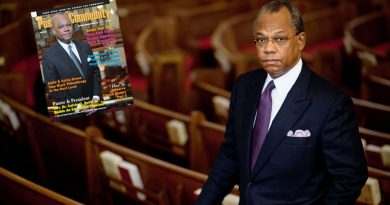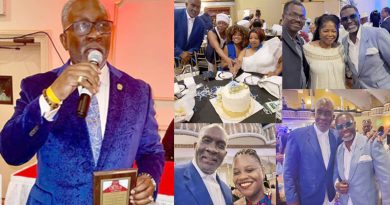The Makings of Black History
BY ROBERT L. JOHNSON, MD, FAAP’72
THE SHARON AND JOSEPH L. MUSCARELLE ENDOWED DEAN
RUTGERS NEW JERSEY MEDICAL SCHOOL
INTERIM DEAN
ROBERT WOOD JOHNSON MEDICAL SCHOOL
For more than 50 years, my life has been firmly rooted in the city of Newark. In 1968, I chose to live and learn here while earning my medical degree and completing my residency program. As a pediatrician, I chose to provide care to children and families in this city. My career led me to become an educator, and I remained here to teach students to develop a passion for our community.
Newark is where I made history, becoming the first black dean of Rutgers New Jersey Medical School (formerly UMDNJ). Last year, Newark was an inextricable part of the story as I made history again, becoming the first black man, and only person regardless of race, to be named dean of two medical schools (New Jersey Medical School and Robert Wood Johnson Medical School) in the United States.
Taking a reflective look at Black History Month, I’ll examine three pillars of the community that were integral on my path to leadership: education, the church, and black media.
Academic institutions in the US often have complicated histories. It was our blood, sweat, and tears that built many of these institutions. In an effort to shed light on dark moments in its past, I have great appreciation for Rutgers University acknowledging the contributions of black Americans by renaming several of its buildings and providing a safe place to have difficult conversations about historical injustices. Whether traditional universities or HBCUs, educators and students have made an indelible imprint on raising our country’s consciousness. It’s no surprise that Negro History Week and Black History Month can both be traced back to institutions of higher learning. The halls of academia are regarded as sources of intellectual voices and are often a flashpoint for philosophical and social change.
An equally influential presence in my life was, and still is, the church. For us, the church provides a spiritual foundation. And, the church has often been the place where political movements begin. In fact, many leaders in the black community are leaders within the church. It’s also an institution that has economic power. Members give to the church, and the church invests back into the community–oftentimes making major investments in education. Indeed, most HBCUs have religious underpinnings. The black church has been instrumental in our achievements.
For a large part of my life, black press was the only place that talked about black people. Dating back to the early 1800s, African American publications provided a form of communication when we were excluded from mainstream media. Publications such as New York Amsterdam News, The Final Call, Jet, Ebony, and The Positive Community were common in African American homes. With the launch of BET and OWN, our stories moved to the television screen. Social media and the internet are the next phase along our continuum of communication. I am impressed by how we have utilized Twitter, YouTube, Instagram, Facebook, blogging, and the web to amplify what is important in our communities.
I believe that education, the church, and media will remain the bedrock of our community. In the city of Newark, I’ll add healthcare as a fourth pillar. Since relocating to Newark 60 years ago, New Jersey Medical School and other health entities have been key to achievements in health issues including HIV and AIDS, substance abuse, lead poisoning, and traumatic injuries.
In summary, I share my professional achievements and pillars of support to simply highlight the fact that history, although viewed through a retrospective lens, is something that we are all presently creating. Black history takes place every day in Newark. It is my great honor to make history within such a vibrant and resilient community.
This month, and in perpetuity, I celebrate our rich history while working diligently to advance and elevate our narrative within our community and the U.S.


